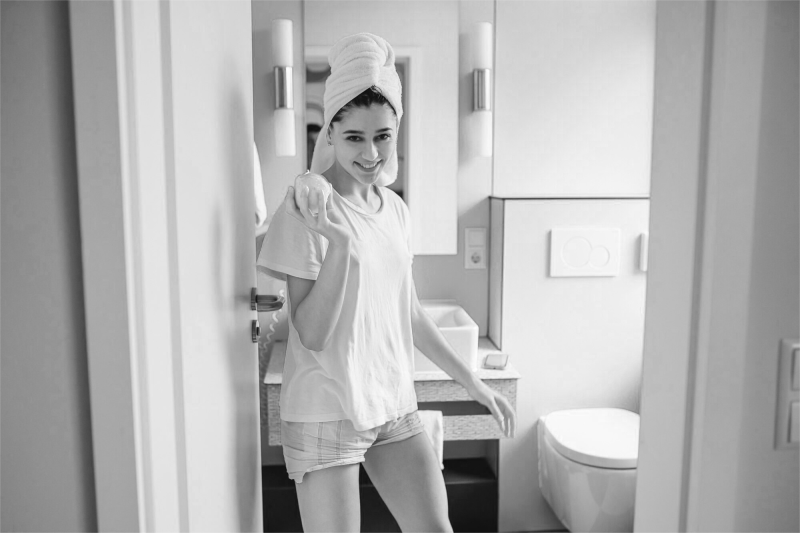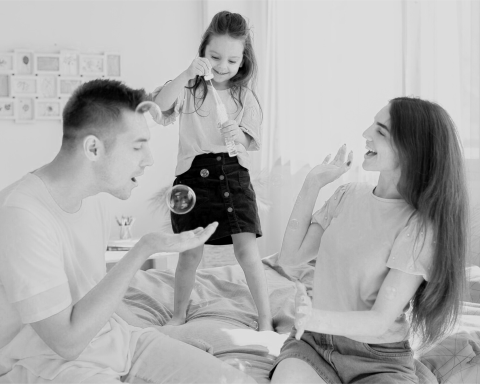Toilet hygiene is one of those things you rarely talk about but practice every day. For many, it feels like a simple routine: flush, wash, and leave. Yet, the truth is that proper toilet hygiene has a far greater impact than surface-level cleanliness. It protects your health, builds your self-esteem, and even influences how you connect with others in shared spaces.
On the other hand, neglecting toilet hygiene can have real consequences. Beyond the obvious health risks, such as infections or stomach illnesses, it can also erode your emotional well-being.
Feeling unclean or worried about odors can lead to embarrassment, anxiety, and even avoidance of social or professional situations. Over time, these minor lapses don’t just affect your body; they affect how confident and secure you feel in daily life.
This article examines the significance of toilet hygiene, its impact on both physical and emotional well-being, and the practical steps you can take to enhance it. Read on to discover the hidden value of toilet hygiene and how small habits can lead to a healthier, more empowered life.
What is toilet hygiene?
Toilet hygiene refers to the set of habits you practice before, during, and after using the toilet. It’s more than just a matter of cleanliness. It’s an essential part of caring for your body and environment. How you care for yourself in this private routine directly impacts your health, confidence, and even your relationships with others in shared spaces.
Good toilet hygiene includes everyday habits such as:
- Wiping correctly from front to back for females to avoid infection, and thoroughly for both genders.
- Flushing correctly with the lid down to prevent bacteria from spreading through droplets.
- Washing your hands regularly with soap and water for at least 20 seconds.
- Cleaning toilet surfaces after use to reduce germs and odors.
- Keeping toilet supplies stocked and sanitary, such as toilet paper, soap, and a clean towel or hand dryer, ensures easy and consistent hygiene.
These small actions go beyond routine. They serve as protective barriers against illness and help foster respect for oneself and others.
Toilet hygiene is rarely discussed openly, but it plays a significant role in your overall personal well-being. Understanding and improving small hygiene habits can make your daily routines healthier, more mindful, and more dignified.
In the following sections, you’ll explore how to practice proper toilet hygiene, maintain a cleaner environment, and support your long-term health through consistent habits.
Extending hygiene to shared and public spaces
When you’re at work, school, or using a public restroom, toilet hygiene isn’t just about you anymore.
At home, you control your environment. You can decide how often it’s cleaned, what products are used, and how it’s organized. But in public or shared settings, that control is limited. That’s why awareness and cooperation matter.
Shared restrooms are full of high-touch surfaces where germs easily spread. These spaces can harbor hundreds of bacterial species, including potential pathogens, due to the constant human contact and moisture. Research comparing public to household restrooms found that only toilet flush handles in public facilities can carry a high risk for viral infections. This shows how quickly microbes on shared surfaces can become sources of illness.
That’s why, when you’re in a shared restroom, you’re participating not only in your own hygiene but also in a shared environment that others will use. That’s a collective act that supports public health and community wellbeing.
Why toilet hygiene matters beyond health
Toilet hygiene isn’t only about staying germ-free. It’s also about the way you perceive and care for yourself daily.
Preventing infection and discomfort
Poor toilet hygiene can lead to urinary tract infections (UTIs), stomach problems, or skin irritation.
Research published in BMC Infectious Diseases shows that frequent UTIs are strongly linked to poor toileting habits and inadequate genital hygiene, meaning that consistent care plays a direct role in preventing recurrence.
The World Health Organization also highlights that hand hygiene alone reduces diarrheal disease by up to 31%, underscoring how small, regular acts of cleanliness protect against multiple infections.
This demonstrates that simple habits, such as washing your hands and maintaining cleanliness after using the toilet, are powerful ways to protect your health and prevent unnecessary discomfort.
Supporting self-respect and personal dignity
There’s something deeply personal about staying clean. Practicing proper hygiene can strengthen your body image, reduce embarrassment, and enhance your confidence.
Think about walking into a meeting after a rushed morning. Because you took a moment to freshen up, you feel calm and composed. Instead of worrying about how you look or smell, you focus on what you have to say.
Research consistently shows that maintaining personal hygiene not only supports physical health but also enhances psychological well-being. Proper hygiene habits promote mental clarity and a positive self-image by reducing anxiety in social settings.
When you feel fresh and put-together, you naturally carry yourself with more confidence and ease.
Ultimately, cleanliness isn’t just about appearance; it’s an act of self-respect that nurtures your dignity and helps you present yourself fully in both your personal and professional life.
Cultivating mindfulness and discipline
Hygiene rituals, though small, are acts of mindfulness. Each flush, wash, and tidy-up reinforces self-discipline and awareness.
Practicing cleanliness requires focus, patience, and consistency. These habits move from being chores to grounding rituals that center your attention. They help you feel more in control and intentional about your well-being.
They also remind you to care not just for your body but for the spaces you move through. This mindfulness applies whether you’re in your own bathroom at home or using a shared restroom at work.
Washing your hands after cleaning your bathroom or wiping down a public sink before use can be an act of mindfulness. As you notice the warmth of the water or the scent of soap, you’re grounding yourself in the moment. This simple act becomes a quiet reflection of care both for yourself and the people who will use the space after you.
Over time, these mindful routines cultivate not only cleanliness but also calmness, resilience, and a deeper sense of discipline.
Read more: How to Organize Bathroom Items Using Colors
Practical toilet hygiene tips for everyday life
Small, science-based practices make maintaining toilet hygiene easy. The tips below guide both personal care and maintaining a clean environment.
Good hygiene tips for females and feminine care
For women, toilet hygiene carries unique importance.
Research highlights that menstrual hygiene and sanitation have a direct impact not only on physical health but also on self-esteem, confidence, and participation in daily activities.
Below are some good hygiene tips for females that help prevent infections, reduce discomfort, and support overall dignity:
- Adapt your menstrual care to your body’s rhythm. Your menstrual flow and body temperature fluctuate throughout your cycle. Changing products every 4-6 hours prevents bacterial growth and skin irritation. Using breathable cotton pads or sterilized menstrual cups helps maintain the vaginal microbiome, which protects against yeast infections and odor.
- Create a portable hygiene plan for public spaces. Public restrooms often fail to provide the privacy or cleanliness you expect. Carry compact essentials such as spare pads or tampons, or a menstrual cup if you use one. Pack hand sanitizer, intimate wipes, and a discreet bag for clean and easy disposal. This preparedness eases stress and helps you stay confident in any situation.
- Mind your post-restroom habits. Always wipe front to back to prevent bacterial transfer from the anal area to the urethra. If possible, wash with clean water instead of just using dry tissue, as water cleansing has been proven to reduce urinary tract infections (UTIs) in women. In public restrooms, use sanitizer before and after touching doors, flush buttons, or faucets.
Hygiene tips for men
Toilet hygiene is sometimes overlooked in conversations about men’s health, yet research shows that men’s hygiene practices have far-reaching effects. Proper routines not only reduce infections and discomfort but also reflect self-respect and consideration for those who share your environment.
By practicing simple habits consistently, men can protect their health and contribute to a cleaner, healthier community.
- Sit to reduce splashing. Whenever possible, sit while using the toilet. This reduces splashing, minimizes odor, and helps keep shared spaces cleaner.
- Clean thoroughly after bowel movements. Always use toilet paper properly, and if a bidet is available, use it for extra cleanliness. Inadequate cleaning can lead to irritation, infection, and lingering odors.
- Keep the genital area clean and dry. Daily cleaning and keeping the area dry lowers the risk of fungal infections and discomfort. This is especially important in warm or humid climates.
- Trim and groom pubic hair carefully. Regular trimming helps reduce sweat and bacterial buildup, minimizing odor and skin irritation. Gentle grooming also helps prevent ingrown hairs and infection if done with proper hygiene.
- Wash your hands every time. Never skip handwashing. Thoroughly washing your hands with soap and water for at least 20 seconds is one of the most effective ways to prevent the spread of bacteria and disease.
Cleanliness tips for your environment
Your toilet environment is just as important as personal hygiene. Bathroom surfaces often serve as reservoirs for harmful bacteria and viruses. Without proper cleaning, germs can linger on handles, seats, or faucets and easily spread among household members or coworkers.
By maintaining a clean environment, you not only protect yourself but also everyone who shares the space.
- Disinfect key surfaces regularly. Wipe and disinfect flush handles, toilet seats, and doorknobs at least once a week at home. In high-use bathrooms, more frequent cleaning may be necessary.
- Flush with the lid closed. Closing the lid before flushing prevents germs from being sprayed into the air–a phenomenon sometimes called the “toilet plume.”
- Keep essentials stocked. Always ensure your bathroom has soap, toilet paper, sanitary bins, and cleaning wipes readily available. A well-stocked restroom supports consistent hygiene practices for you and others.
Remember that cleanliness doesn’t stop at your own bathroom. When using public or shared restrooms, bring small essentials, such as hand sanitizer, disinfectant wipes, or tissues, to help keep yourself clean and hygienic. Wipe surfaces before use and tidy up after. These small habits help you stay safe and leave the space cleaner.
The goal is simple: leave the place better than when you came in and make sure you have a tidy and non-hazardous environment whenever you use the toilet.
Read more: Eco-Friendly Cleaning Methods for a Cleaner Home
In conclusion
Toilet hygiene may seem like a minor detail in your day, but it plays a significant role in how you feel, your overall health, and your interactions with others. It’s not just about preventing germs–it’s about affirming your dignity and practicing daily self-respect.
Think of toilet hygiene as an act of self-care. By committing to simple habits like proper wiping, handwashing, and keeping your environment clean, you’re investing in your health and well-being.
Take one hygiene habit you can improve today. Whether it’s washing your hands consistently, flushing with the lid closed, or keeping your workplace restroom tidy. Use it as a foundation for stronger self-care.
If you want to see more resources on smoking, check out the Personal Science Labs. The lab uses the research of the Institute for Life Management Science to produce courses, certifications, podcasts, videos, and other tools. Visit the Personal Science Labs today.
Photo by teksomolika on Freepik



